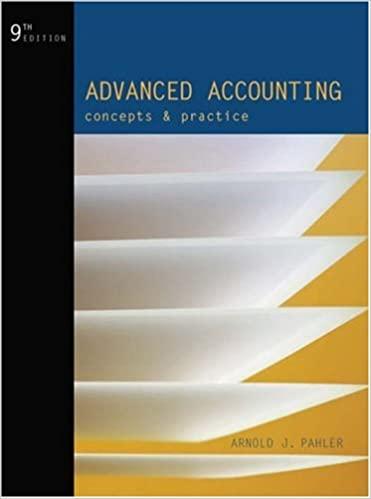Basic Understanding of the Nature of Goodwill Shelley and Brett are children who live one street apart.
Question:
Basic Understanding of the Nature of Goodwill Shelley and Brett are children who live one street apart. Shelley has saved $100, and Brett has saved $250. Each child desires to open a lemonade stand on his or her own front lawn. Each invests $100 in the business, using $75 to buy a table, a chair, a pitcher, and a stirrer. Each uses the remaining $25 to purchase supplies (lemons, sugar, paper cups). Shelley lives on a street with many other children; Brett does not. After one year in business, Shelley made a profit of $60, but Brett made a profit of only $20. Each withdraws from the business the profits made and spends the money on personal items. On the first day of the sec¬
ond year of business, the two children meet for lunch and discuss business. Shelley indicates that she is willing to sell her business if the price is right. Brett wants to make more money than his business now generates; he knows that Shelley’s lemonade stand sells much more lemonade than his does. Brett offers to buy Shelley’s business; she knows that she has a far better business loca¬ tion than Brett does.
Brett and Shelley agree on a purchase price of $130, with $100 for the purchase of equipment and supplies. Brett pays the remaining $30 in anticipation of being able to make substantial prof¬
its in the future above and beyond what would be considered average (goodwill). Brett is entitled to use Shelly’s site for only two years.
Required 1. How much capital was invested in each separate business just before Brett acquired Shelley’s business.^
2. How much capital is invested in each separate business location just after Brett acquired Shel¬
ley’s business?
3. How much money does each child have after Brett acquired Shelley’s business?
4. Considering that the children had a combined capital of $350 just prior to the commencement of their businesses and distributed and spent their profits for year 1, how can they now have more capital than they started with? (Combine the answers to requirements 2 and 3 to arrive at their total capital.)
5. What amounts will appear in Brett’s income statements for the next two years (for his second business) assuming that Brett has:
a. The same cash inflows Shelly had?
b. The same cash flows he had for his first business (superior earnings did not materialize)?
Step by Step Answer:






